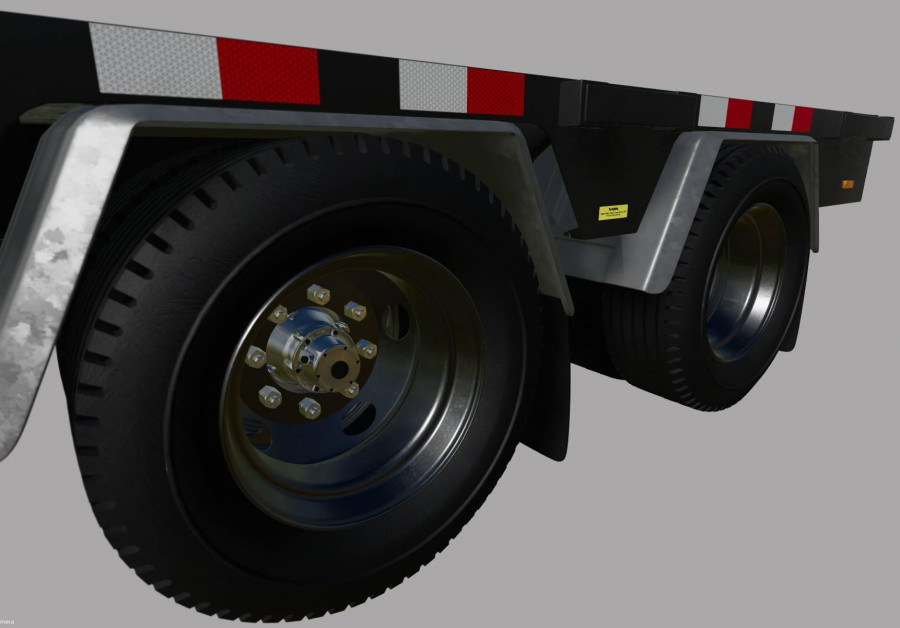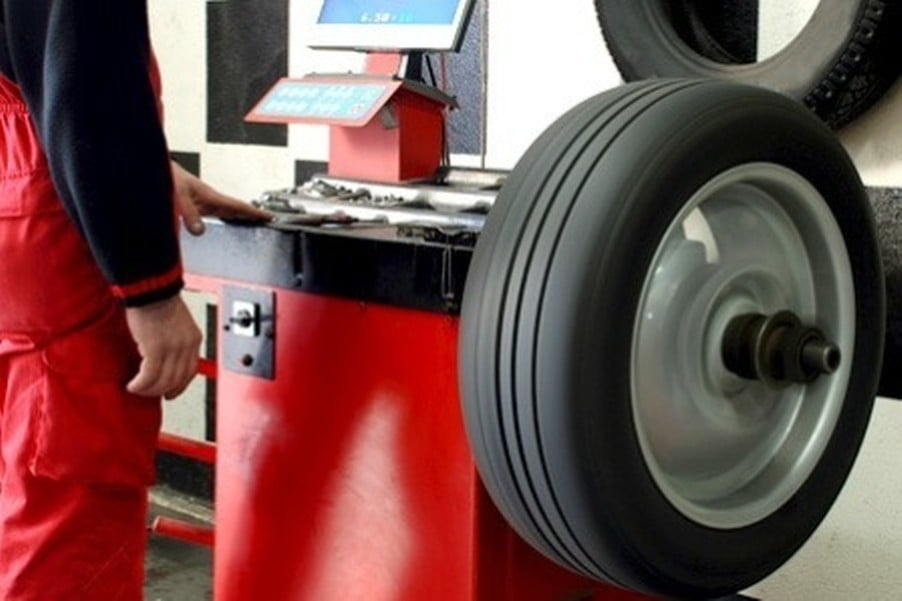We all know trailers that are misaligned and out of spec will lead to early tire removals, a decrease in vehicle fuel economy and many unhappy drivers.
Today’s trucking fleets are looking at every possible way to improve fuel economy and maximize tire performance. When it comes to their maintenance budget, trailer alignment and trailer tires are typically last on a fleet’s priority list. This is a big opportunity for commercial tire dealers to work with their customers’ trailers and help improve tire removal miles through proper alignment.
Did you hear about the study that finds you no longer have to change oil in your engines? You just change engines more often. The same analogy holds for vehicle alignment. You don’t need to check alignment, simply buy more tires and fuel.
The Technology Maintenance Council (TMC) publishes the bible of the industry when it comes to tire conditions: Radial Tire Conditions Analysis Guide (volume 4). This 164-page, full-color book is a comprehensive review of tread wear and tire conditions, and the causes of irregular wear.
There are specifically two trailer tire wear conditions directly related to trailer misalignment: one-sided wear and rapid shoulder wear on one side of the tire.
One-sided wear is defined as excessive wear across the entire tread surface where the fastest wear is on the outside or inside shoulder rib and each of the adjacent ribs also are worn, but to a lesser extent. Excessive toe is the major cause for this tire condition.
Rapid shoulder wear on one side of the tire is the other condition related to trailer misalignment. Excessive camber and a misaligned or bent axle will lead to this rapid shoulder wear condition.
Trailer tires have a history of neglect and underinflation. Tires underinflated against fleet specification will magnify these irregular wear alignment-related conditions and lead to even earlier removal miles and reduced overall fuel economy.
This past April, TMC issued a Recommended Practice on trailer alignment RP 708B which details the procedure on how to quickly and easily measure trailer alignment. Axle toe also is included in this document, since toe is the alignment setting that affects tire wear the greatest.
Very little equipment investment is required by a commercial tire dealer to check a trailer for alignment. A trammel bar, tape measure, kingpin extender and wheel-end extender are all that is required.
Once you have the required tools, it’s time to measure the trailer alignment. This procedure involves several steps:
Properly position the trailer
Set the designed kingpin height
Check the initial axle alignment
Select the appropriate alignment area. This area should be flat, level and debris-free. You most definitely want to inspect the tires to ensure each dual wheel set is within 3/4-inch in circumference. New tires mixed in with worn tires will lead to unreliable data.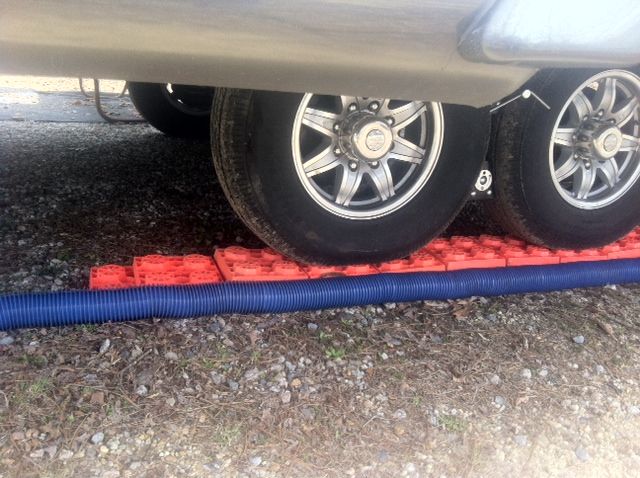 All tires should be set to the same pressure.
All tires should be set to the same pressure.
The next alignment preparation step is to make sure you set the suspension ride height to the designed ride height, which should be listed on a vehicle placard. If not listed, contact the manufacturer for this height setting.
The last pre-alignment check is to inspect the trailer and suspension for any damaged components.
Alignment Procedure
The actual trailer alignment procedure begins with proper positioning of the trailer. The trailer suspension must be in a “relaxed” state without any pre-load applied to the bushings. There are several ways to ensure there is no pre-load, depending on whether the trailer has a slider or non-slider.
For example, if the trailer is a non-slider, adjust the trailer landing legs so there is adequate ground clearance while the trailer is still coupled to the tractor. Then pull the trailer forward a minimum of 10 feet and gently apply the trailer service brakes. Now lower the trailer landing legs.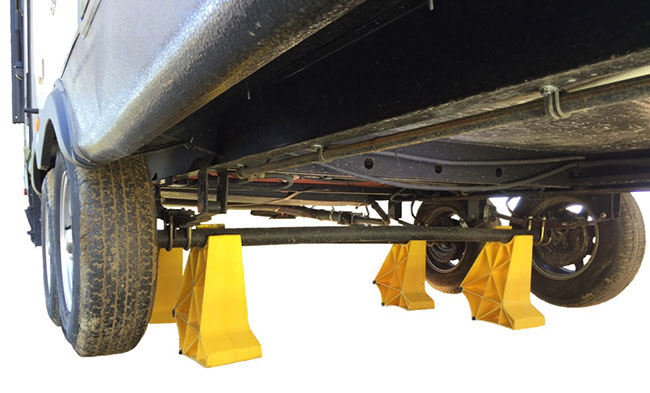 Uncouple the trailer. Keep the trailer parking brakes disengaged.
Uncouple the trailer. Keep the trailer parking brakes disengaged.
Now it is time to set the front of the trailer to its designed kingpin height. This designed height should be listed on the trailer ID tag. Use a tape measure to determine the kingpin height by measuring from the ground to the kingpin mounting plate. Adjust the trailer landing legs to the designed kingpin height.
Check the initial axle alignment by using a kingpin extender or adapter, along with installing a wheel-end extender. Make sure the wheel-end extenders are a matched pair.
Next, measure the length of the wheel-end extender and the axle track length. Using a tape measure, there are four additional measurements required. You need to measure the distance from the kingpin to the end of the wheel extender of the front axle for both sides of the trailer (A & B). You also need to measure the length between the center point of the two outside tires on each side of the trailer (C & D).
Depending on the wheel-end extender length and the width of the axle track, the front axle target length (A & B measurement) is either +/- 3/16-inch or +/- 7/32-inch.
If the difference between the A and B measurements is smaller than or equal to the target value, the axle is within specification and no adjustment is required.
The distance between axles from the center of one hub to the other hub center is the C and D measurement. Use a trammel bar to measure these values. Position the trammel bar so the pointers are at the center of the front- and rear-axle spindles. These measurements should be within 1/16-inch. If they differ by more, adjust the rear axle position.
The last important measurement is axle toe, which has a significant effect on alignment. Use a trammel bar to mark the tire centerline with chalk on both outside tires on the front axle. Remove the trammel bar and move the trailer backwards so the tires rotate one-half turn. Using the same trammel bar, but now from the backside of the front axle, scribe a new chalk line as before. If the toe is 0, the second line marked will be superimposed on the first line.
If the two scribed lines are not superimposed, the distance between them is the amount of toe-in or toe-out. If an axle has excessive toe, it is impossible to align the axle so that acceptable tire wear is obtained. Excessive toe usually is due to a spindle bent from an impact. The only way to adjust toe on a trailer is to bend the axle, which is not recommended by trailer axle manufacturers.
If an axle has excessive toe, it is impossible to align the axle so that acceptable tire wear is obtained. Excessive toe usually is due to a spindle bent from an impact. The only way to adjust toe on a trailer is to bend the axle, which is not recommended by trailer axle manufacturers.
With a little practice and the right tools, you quickly can measure trailer alignment and help your customers optimize tire wear and fuel economy by ensuring their vehicles are rolling down the highway in a straight line.
In this article:
by Jenni
The answer to “can travel trailer tires be aligned?” is, yes.
Travel trailer and 5th-wheel tires can be aligned and if you’ve traveled a lot or just gotten a new camper trailer you may want to check to see if it needs to be done.
If your camper does need some alignment done you can take it into a shop with alignment equipment or you can add a Lippert Correct Track Trailer Alignment Kit (click to view on Amazon).
Related Product: We level our RV with the innovative Andersen RV Leveling Set (click to view on Amazon)
Travel Trailer & 5th-Wheel Tire Alignment
How To Check If Your Travel Trailer Or 5th-Wheel Needs Alignment
How Are Travel Trailer Tires Aligned?
Irregular wear on the tires is one way to see if the alignment is off or if a bearing is loose.
If one side of a tire is being worn out faster than the other you should jack up that tire and push it in and out. If it wiggles you may have a worn bearing that is causing the uneven wear.
If the tire does not move your trailer tires may be out of alignment.
Another way to check the alignment of a dual axel trailer is to measure.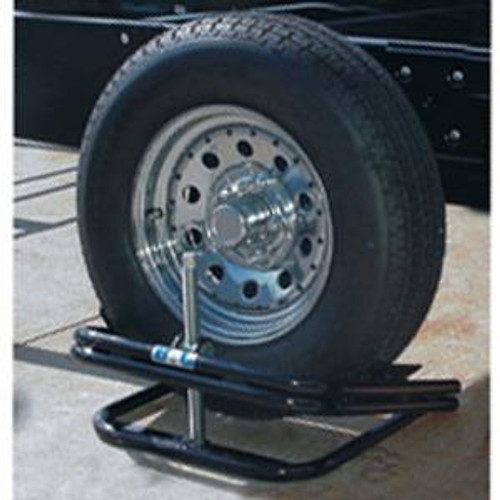 Measuring properly to check trailer tire alignment requires parking your trailer on a flat surface.
Measuring properly to check trailer tire alignment requires parking your trailer on a flat surface.
Make sure the tires are fully inflated and the trailer is packed as if you are going to travel now. You want the weight distribution to be the same as if you were towing.
See Also: Best Electric Trailer Jacks Reviewed (Tongue & A-Frame)
The tires need to be straight for measurements. Pull straight forward at least one full tire rotation so the tires aren’t slightly angled from backing or turning.
Once parked you will need to measure from the front center of your trailer to the front center of each tire. On travel trailers, most people measure from the back of the ball hitch coupler.
On a 5th-wheel you may need to hang something from the kingpin to lower the center measuring point so you can reach it with a tape measure.
A plumb bob (click to view on Amazon) is a good way to do this. Just make sure your 5th-wheel is level when you do this.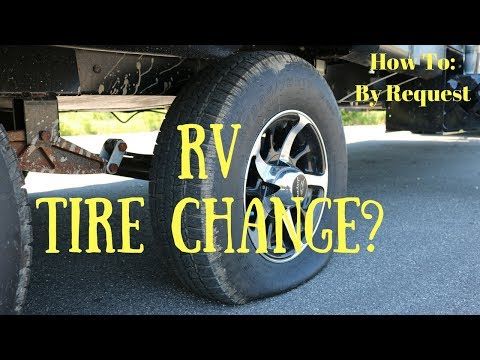
Make sure you are measuring to the same spot on each tire. You are going to be comparing the measurements from the center point to each tire on each axle.
The measurements from the center to each tire on the same axle should be within 1/8 inch of each other.
On a dual axle trailer, you can also measure the axles to make sure they are aligned with each other. Choose the same spot on each hub and measure diagonally.
If the measurements don’t line up your axles may not be aligned.
If your travel trailer tires do need to be aligned you can either take it to a repair shop that has alignment equipment or use an at home trailer tire alignment kit.
If the trailer is majorly misaligned by more than a few inches I suggest taking it to a shop.
At a repair shop, they will use equipment to bend the axles back into the right position to align the tires.
If the alignment is off by less than two inches you may be able to install the Lippert Correct Track Trailer Alignment Kit (click to view on Amazon) to align the tires yourself.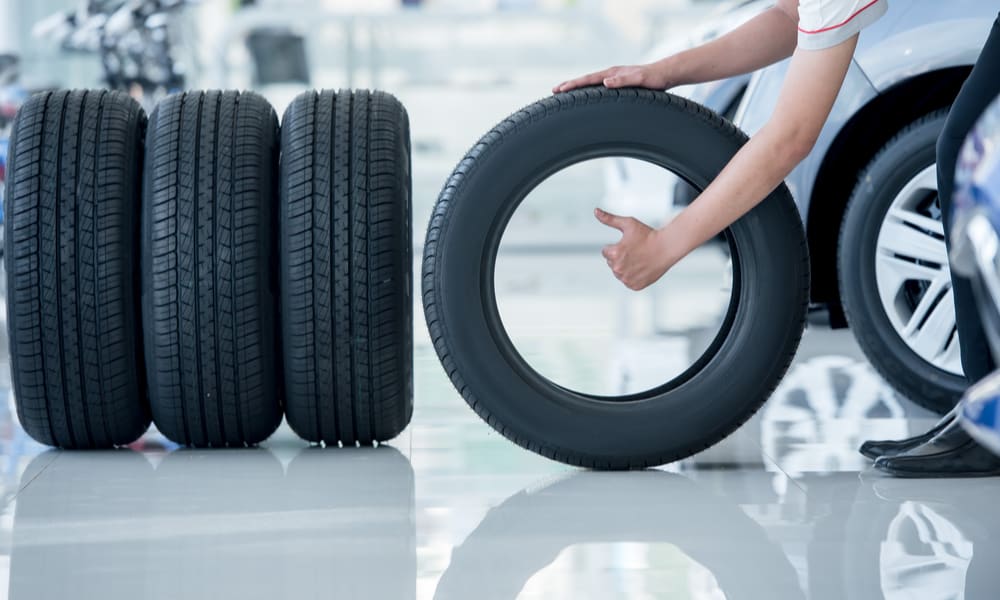
See Also: Best Travel Trailer Weight Distribution Hitches With Sway Control
Note that this kit does not move the axles. Instead, it adjusts the leaf springs. Using this kit will lift your trailer by two inches.
Some newer travel trailers and 5th-wheels are coming out of the factory with a Correct Track already installed. You may want to check to see if your camper has one already.
Have any more questions about travel trailer alignment? Leave a comment below.
Categories Q & A, RV
Basic driving techniques with an off-road trailer on asphalt are no different from those with any other trailer. When overtaking, one should not forget about the long tail trailing behind the car.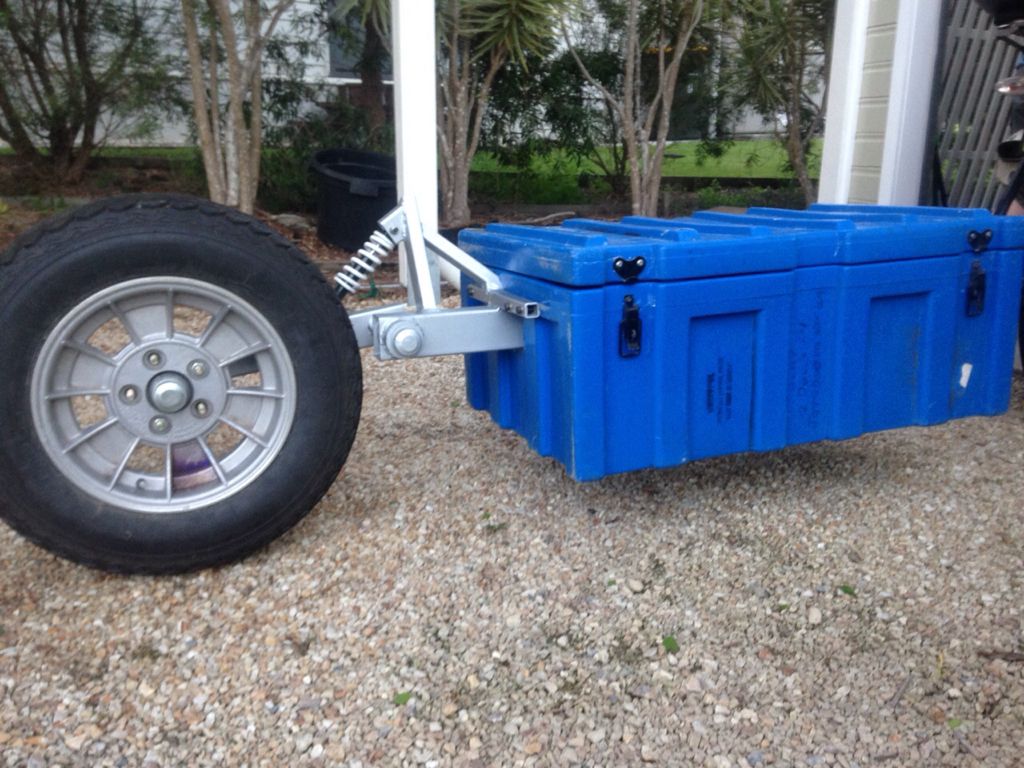 In turns, the trailer moves along a smaller radius, while the width of the corridor increases greatly. If the trailer suddenly begins to lose stability, for example, from a sudden collision with an obstacle and it begins to swing along the road, then in no case should you slow down. On the contrary, you should gradually increase the speed in order to stretch the road train. If everything is fine with the trailer, it should level out.
In turns, the trailer moves along a smaller radius, while the width of the corridor increases greatly. If the trailer suddenly begins to lose stability, for example, from a sudden collision with an obstacle and it begins to swing along the road, then in no case should you slow down. On the contrary, you should gradually increase the speed in order to stretch the road train. If everything is fine with the trailer, it should level out.
When reversing, turn the steering wheel in the direction opposite to the direction the trailer is going to turn in order to maintain a straight line. Any maneuver requires special care.
The vertical load on the tow bar must be in accordance with the instruction manual. Usually, depending on the design of the trailer, it ranges from 45 to 120 kg. If the center of gravity is strongly shifted back, the towbar will tend to tear the rear axle of the car off the ground. If, on the contrary, the center of gravity is shifted forward, the towbar will press the rear axle of the car too much, and the front axle will be unloaded.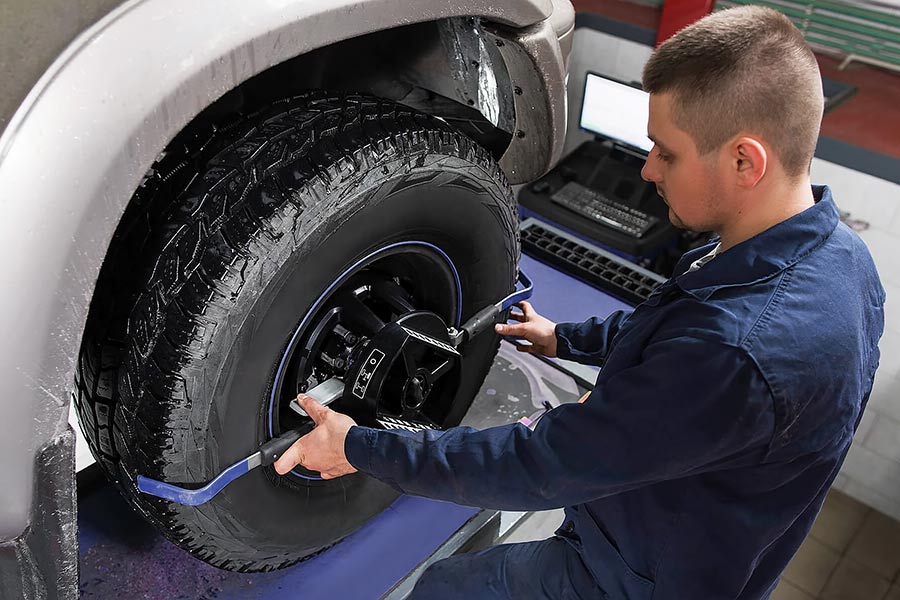 In both cases, handling will greatly deteriorate, and the load on the towbar will be higher than permissible.
In both cases, handling will greatly deteriorate, and the load on the towbar will be higher than permissible.
When driving with an off-road trailer on OFF-RAOD, use the same obstacle avoidance techniques as without one. The main thing is that you treat the choice of the trajectory with special care. If there are some insurmountable sections on your way, it is better to either go around them or improve the terrain in advance. Remember that it is better to work with a shovel before you get stuck.
It is not necessary to put on the trailer with tires of the same pattern and dimension as on the tractor vehicle, the main thing is that the pressure in the tires of the trailer and the tractor is the same. In order to level the trailer, it is easier to adjust the height of the drawbar or hitch, if the design allows it.
When planning a trip on very difficult off-road, it is better to get a trailer, the track of which matches the track of the car. In all other cases, it is not so critical.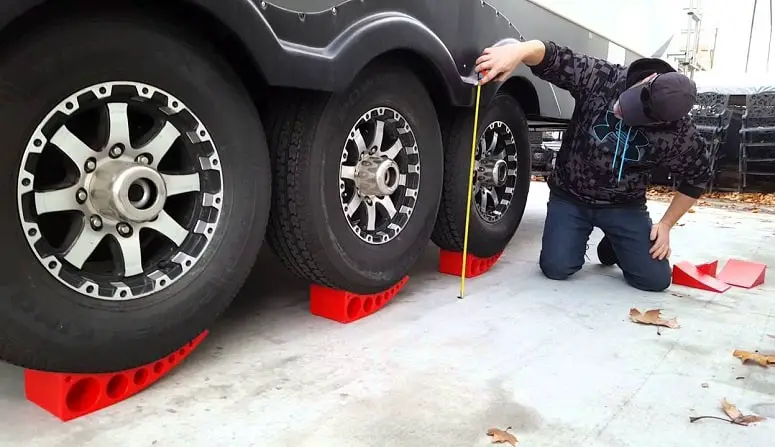
It is necessary to cross ditches, ditches, embankments and ruts, if possible, at an angle that excludes side impact of the tire, so as not to be dismantled.
Do not take into account the degree of freedom that the hitch gives, so as not to damage it, the trailer tongue or the vehicle itself.
On loose soil, trailer wheels, as well as car wheels, must be lowered to a pressure of maximum 1.5 atmospheres, but in sand or in a swamp up to 0.5 - 1 atmospheres.
You should move in the rut in the same way as usual, getting out of it, you should choose amplitude swinging prims, but you need to remember that it is much more difficult to jump out of a deep rut with a trailer, which means you need to leave the deepening rut in advance.
Off-road driving in reverse with a trailer is difficult, if you need to turn around, it is easier to unhook the trailer, turn the car separately, and then hitch it again.
Trailering will be most difficult on steep descents and ascents, if you are not sure that you will overcome the ascent or descent - look for a detour.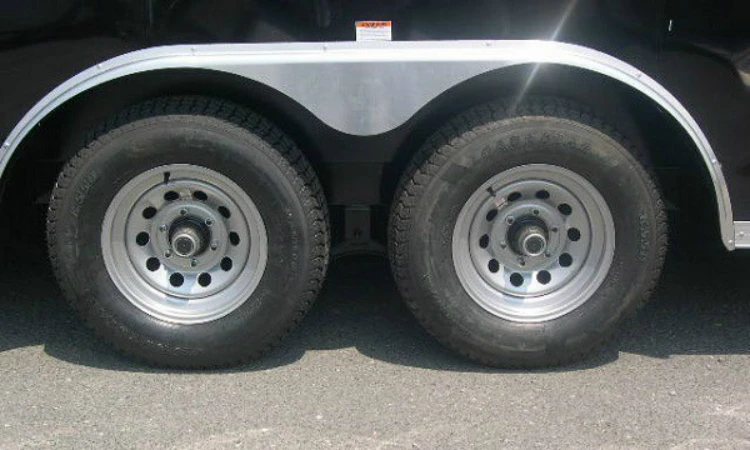 Remember that if the first time you do not climb a steep slippery hill, then when you roll back, the trailer will most likely turn across the course, and this is fraught not only with breakdowns of the hitch or car, but also with the overturn of the entire road train. A deep track in this case will make the task easier, your trailer is unlikely to go anywhere from it, your task, in any case, is to have time to switch to reverse gear, keep the steering wheel straight and brake very carefully so as not to break the wheels into the skid. It is most correct to take a dubious climb in several stages, using the help of other participants in the trip. Prepare wheel chocks in advance, if they are not available, use stones or logs. Then climb up until you feel that the wheels are about to break into slip. In no case do not allow this, stop the car, assistants should immediately place the above-mentioned stops under the wheels of the trailer and the rear wheels of the car. After that, unhook the trailer and drive up the hill without it, unwind the winch cable, put a center or something else under the trailer drawbar that will prevent it from hitting the ground and pull the trailer up with a winch.
Remember that if the first time you do not climb a steep slippery hill, then when you roll back, the trailer will most likely turn across the course, and this is fraught not only with breakdowns of the hitch or car, but also with the overturn of the entire road train. A deep track in this case will make the task easier, your trailer is unlikely to go anywhere from it, your task, in any case, is to have time to switch to reverse gear, keep the steering wheel straight and brake very carefully so as not to break the wheels into the skid. It is most correct to take a dubious climb in several stages, using the help of other participants in the trip. Prepare wheel chocks in advance, if they are not available, use stones or logs. Then climb up until you feel that the wheels are about to break into slip. In no case do not allow this, stop the car, assistants should immediately place the above-mentioned stops under the wheels of the trailer and the rear wheels of the car. After that, unhook the trailer and drive up the hill without it, unwind the winch cable, put a center or something else under the trailer drawbar that will prevent it from hitting the ground and pull the trailer up with a winch.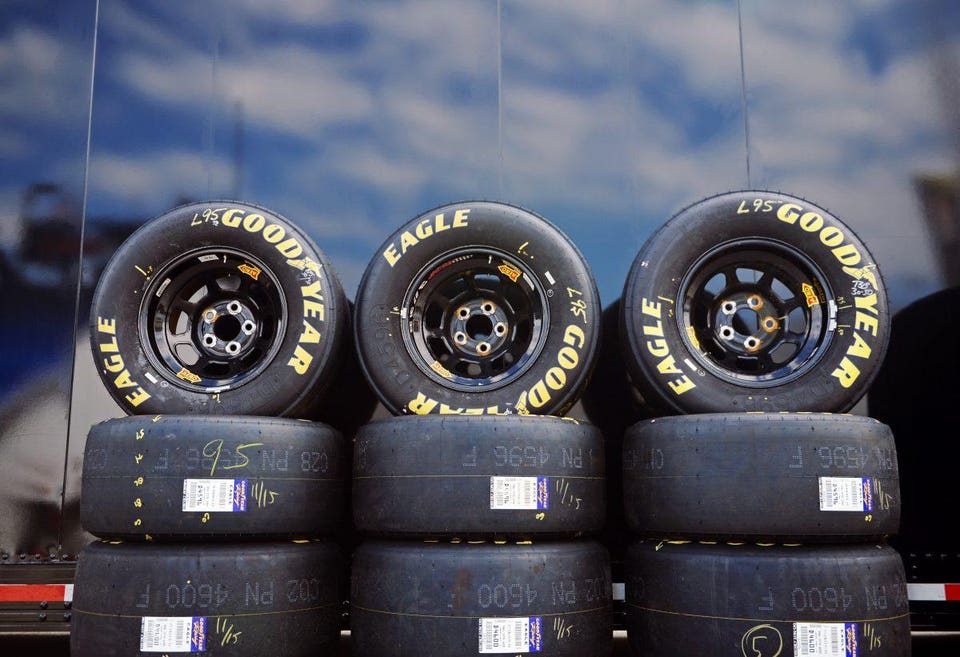 Calculate in advance whether the length of the cable is enough for you, if not, do not start the ascent, a hundred-kilometer detour is better than repair after a crash.
Calculate in advance whether the length of the cable is enough for you, if not, do not start the ascent, a hundred-kilometer detour is better than repair after a crash.
Steep descents are climbed in first or second low gear to ensure maximum engine braking strictly vertically down the runoff line. The steering wheel should be kept straight, and in no case should the car be allowed to accelerate. It is also not recommended to use the brakes, because the risk of falling into an uncontrolled slip on locked wheels in a heavy road train is very high.
If you feel that the trailer starts to overtake your car, then in no case do not slow down, because otherwise the trailer will collapse by inertia, but on the contrary, gradually increase the gas to align the road train.
It is very dangerous to drive along a slope or sideways, never do it. Be aware of the angle of fracture, both at the beginning of the ascent and at the top of the hill where you are going to call, if it is too large, the trailer-car joint will not withstand the load and will break.
If the dirt road running along the slope has a side slope, then it is quite dangerous to drive on it in wet weather. At the same time, if you feel that the entire road train or trailer has begun to be pulled down the slope, then gradually increase the speed to align the entire hitch.
When returning to the asphalt, check the hitch, clean the trailer wheels from dirt and do not forget to inflate the tires to road pressure.
Eduard Solodin
drives a car with a trailer
Author profile
When I moved to another city, I needed to take furniture, household appliances and other bulky items with me. It was possible to order a small truck, but I decided to do everything myself and transport things on a trailer. Before that, I had no experience of driving with a trailer, and the car did not even have a tow bar. I studied the theory and drove more than 3,000 km with a trailer. It turned out that everything is not as simple as it seems.
Before that, I had no experience of driving with a trailer, and the car did not even have a tow bar. I studied the theory and drove more than 3,000 km with a trailer. It turned out that everything is not as simple as it seems.
I will tell you how to equip a passenger car with a towbar, what documents you need to carry with you, how to properly distribute the load and what are the features in driving a car with a trailer. In addition, let me remind you of the rules for transporting a trailer and penalties for those who violate them.
A trailer is a vehicle without an engine that can carry goods. Trailers are popular with summer residents during the harvest, they are used when moving, building and repairing. You can load bulky items into the trailer that do not fit in the interior and trunk of the car, and not worry that they will damage the plastic trim or seat upholstery.
In addition, a trailer can be a whole house on wheels, which you can bring anywhere and live in it. ATVs and motor boats are also carried on trailers. This is an opportunity to transport almost everything you need in a personal car at any time without outside help.
ATVs and motor boats are also carried on trailers. This is an opportunity to transport almost everything you need in a personal car at any time without outside help.
/avtodom/
How much does it cost to maintain a motorhome
You don’t have to buy a trailer, you can rent itto the car frame at the back. Officially, it is called a towing device, hitch. A towbar, unlike a trailer, is not a universal device: it must be selected for a specific car model.
Tow bar may be standard from the factory. If not, you can buy the original one as an accessory. For some cars, you have to look for a non-original towbar - before buying, make sure that it has a certificate of conformity. Sometimes, when installing a non-original hitch, you have to file the bumper.
It is convenient if the towbar immediately comes with an electrical kit: socket and wiring. They are needed so that the brake lights and turn signals light up on the trailer - this is a prerequisite.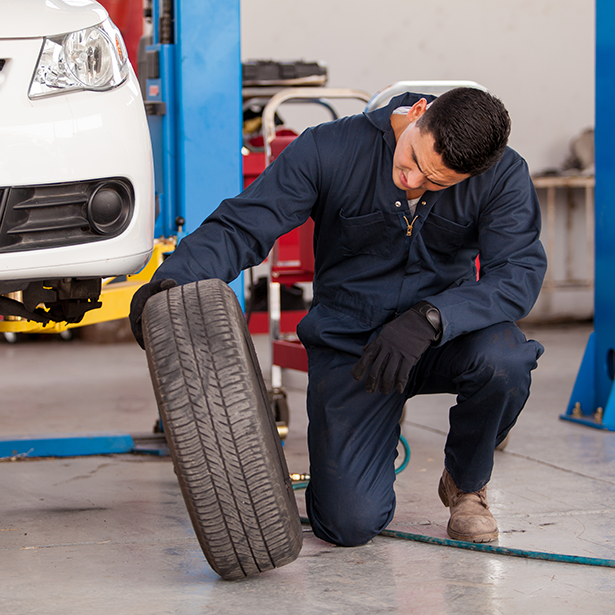 But if there is no standard kit, then the electrical part can be purchased separately. It is universal and is not tied to a car or towbar model. If you have an expensive car, it makes no sense to overpay for a kit that, according to legend, was made just for it. Look at the original for some common and low-maintenance model.
But if there is no standard kit, then the electrical part can be purchased separately. It is universal and is not tied to a car or towbar model. If you have an expensive car, it makes no sense to overpay for a kit that, according to legend, was made just for it. Look at the original for some common and low-maintenance model.
/prava/supercar/
Rights if you buy a car
Sometimes an additional matching unit is needed - a set of relays, without which the on-board network of a car with a new towbar may not work correctly. Here are examples of troubles:
I have a Hyundai Creta, and the first thing I did was go to Drive-2 to look for records of people who had already installed a hitch. So I found out that I don’t need a matching unit, because I have a complete set with ordinary halogen lights - everything will work correctly anyway. If they were LED, I would have to buy. The coordination block costs about 2000 R.
So I found out that I don’t need a matching unit, because I have a complete set with ordinary halogen lights - everything will work correctly anyway. If they were LED, I would have to buy. The coordination block costs about 2000 R.
How to install a tow bar. In my case, it is enough to fasten it with connecting bolts to the standard holes on the rear side members. The bumper does not need to be removed or cut.
The most difficult part is the electrics. To connect the device, you need to remove the trunk trim and gain access to the car's wiring. I don’t understand this at all, so I decided to trust a specialist. He measured the voltage and confirmed that in my case, the matching block was not needed.
I drove around and called about ten car services before I found the right one. For some reason, the first service refuted information from the Internet about the matching unit: allegedly, for LED lamps, the matching unit is not needed, but for ordinary lamps it is mandatory. In the second, they agreed to the installation only if the towbar was purchased from them. In the third, they said that on my Crete it is necessary to cut the bumper, even if the towbar is certified. Another service responded that a trailer was needed and nothing could be done without it.
In the second, they agreed to the installation only if the towbar was purchased from them. In the third, they said that on my Crete it is necessary to cut the bumper, even if the towbar is certified. Another service responded that a trailer was needed and nothing could be done without it.
The price of work was varied in the range of 4000-8000 R. My butt was set for 1,500 r, and the electric part was connected for 2500 r.
4000 R
I paid for the installation of the dynate and connect it to the car wiring
make sure that the car service is certified for the installation of towbars and can put a mark in the service book. This will avoid problems with the guarantee for the car and with the traffic police, when the car will have to be sold and registered with another person. The installation of a towbar does not need to be registered with the traffic police, but the inspector may ask to show a certificate of conformity for a non-original towbar and a mark in the service book.
At the front of the trailer there is a drawbar - a triangular welded structure that is attached to the towbar. Some trailer models have a support wheel on the drawbar. It lowers and rises with the help of a handle and makes it easier to dock the trailer with the hitch. At the end of the drawbar there is a hitch. Usually this is a “cup”, which is put on the towbar ball and fixed with a lever.
Flat trailer frame with folding drawbar. Source: trailer-boat.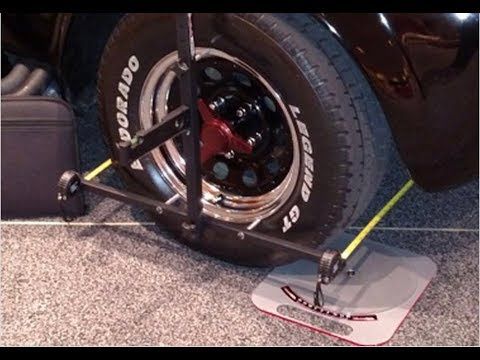 ru
ru Flatbed trailers are needed for the transportation of goods and small equipment. They have a square or rectangular floor with low sides. This is the most common option.
/kater-perm/
How much does it cost to keep a boat in Perm? They do not have sides, and the frame is equipped with skids or rollers along which the watercraft moves. To make it easier to load and unload a boat trailer, use a winch.
Trailers are also divided into light and heavy trailers. Trailers are considered light if their maximum permitted weight is not more than 750 kilograms. It includes the weight of the trailer itself - the curb weight - and the weight of the load. Such a trailer does not have separate brakes: the tractor to which it is attached slows down and stops.
Heavy trailers over 750 kg must be equipped with brakes. Their device is based on inertia: when braking, the drawbar presses on the towbar and clamps the brake pads of the trailer. Heavy trailers may have not one, but two axles.
Heavy trailers may have not one, but two axles.
Vehicle passport is a document containing information about the trailer and its owner. From the PTS, you can find out, for example, the VIN of the trailer, the maximum permitted weight, year of manufacture and color. A title is issued upon purchase of a new trailer; when the owner changes, changes are made to it.
Registration certificate is the main document for the trailer, which confirms its registration with the traffic police. It contains the owner's data and license plate number. The state duty for issuing a certificate of registration is 500 RUR, when issued through the public services portal - 350 RUR.
A license plate for a trailer is issued together with a certificate of registration with the traffic police. If the trailer does not belong to the driver and traffic cameras record a violation according to the trailer's license plate number, then the fine will go to its owner, not the driver. State duty for the issuance of registration plates - 1500 RUR, when issued through public services - 1050 RUR.
/guide/auto-registration/
How to register a car with the traffic police
Driving license for trailer transportation. For trailers with a maximum authorized weight of up to 750 kilograms, special rights are not needed, category B will do. If the trailer's carrying capacity is more than 750 kilograms, category BE rights are required for transportation. Such trailers when loaded may exceed the mass of the car itself: for example, a caravan trailer.
OSAGO insurance. A separate trailer insurance policy is not required.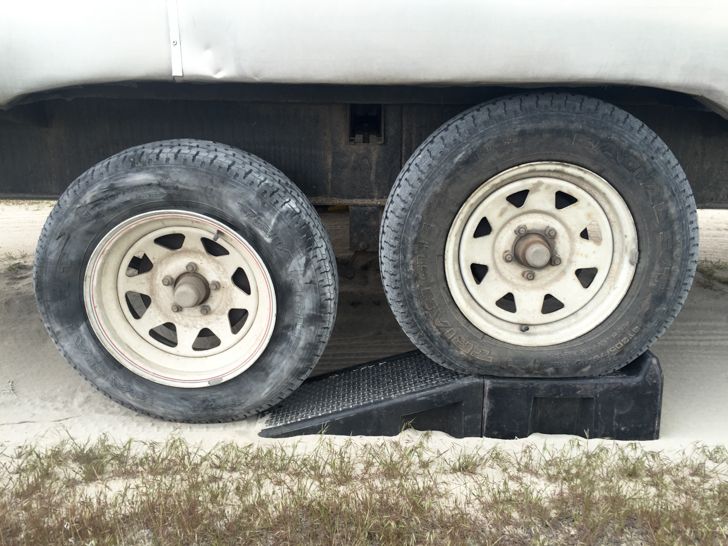 A mark in the current one is required that the car is used with a trailer. If you took out a policy before buying a trailer, you need to inform the insurance company about making changes to the policy, it's free. If the policy is electronic, then after making changes, a policy with a new number and mark will be sent to the email.
A mark in the current one is required that the car is used with a trailer. If you took out a policy before buying a trailer, you need to inform the insurance company about making changes to the policy, it's free. If the policy is electronic, then after making changes, a policy with a new number and mark will be sent to the email.
So what? 04/12/22
5 important changes in the OSAGO rules from October 1, 2022
Inspection. If the trailer belongs to an individual and its mass does not exceed 3.5 tons, then it is not necessary to undergo a technical inspection and receive a diagnostic card.
If the trailer has been idle for a long time or there have been temperature fluctuations, it is important to check the tire pressure before docking it. The recommended pressure is written in the trailer operating manual. Usually it is 2-2.2 atmospheres. The maximum pressure is indicated directly on the tire.
Before the first coupling of the towbar and the trailer, the ball must be lubricated with grease, lithol or similar grease. So that later the ball does not stain clothes and dust and dirt do not settle on the lubricant, it is covered with a special cap.
To dock a car and a trailer, you need to bring the cup of the trailer hitch so that it is located above the tow ball. If the trailer is equipped with a support wheel, then by turning the handle, you can lower the cup onto the ball and fix the connection. The undocking must be done on level ground so that the trailer does not move forward and damage the rear bumper of the car.
If somehow the cup comes off the ball, the trailer will hold the safety chain, which is additionally attached to the hitch. For this, there are holes for the bolt and nut, on which the chain is fixed. If it is not there, it is forbidden to drive with a trailer.
An electric plug is located on the hitch, which is connected to the towbar socket.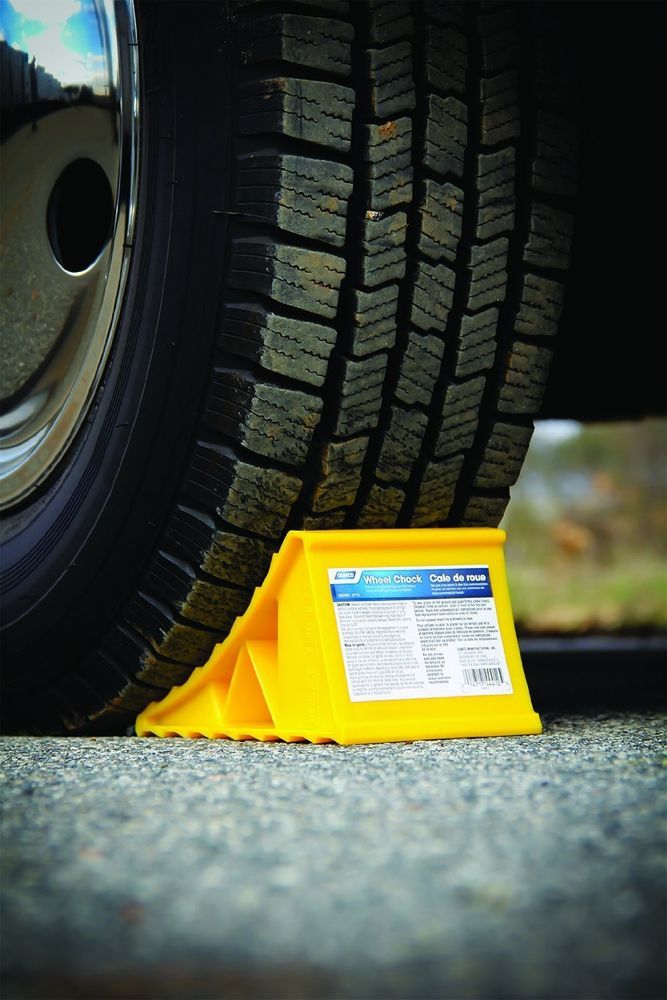 Thanks to this, the turn signals, brake lights and parking lights of the car are duplicated on the signal lights of the trailer. Without these duplicate signals, driving with a trailer is also prohibited. Over time, electrical contacts oxidize, so it is useful to check if all the signals on the trailer are working.
Thanks to this, the turn signals, brake lights and parking lights of the car are duplicated on the signal lights of the trailer. Without these duplicate signals, driving with a trailer is also prohibited. Over time, electrical contacts oxidize, so it is useful to check if all the signals on the trailer are working.
What not to do with car headlights and lamps: 7 mistakes of drivers
Trailer hitch: cup, retainer, electric plug and support wheel for easy docking Bumper damaged when uncoupling a loaded trailer, which was standing at an angle Load distribution. In order for the trailer to be stable in corners, not jump on the road and not provoke a skid, it is important to load it correctly. The center of gravity of the trailer must be above the axle of the wheels. This means that you cannot move the load to the beginning or end of the trailer. It must be evenly distributed over the entire surface, and if the load is single, placed above the axle.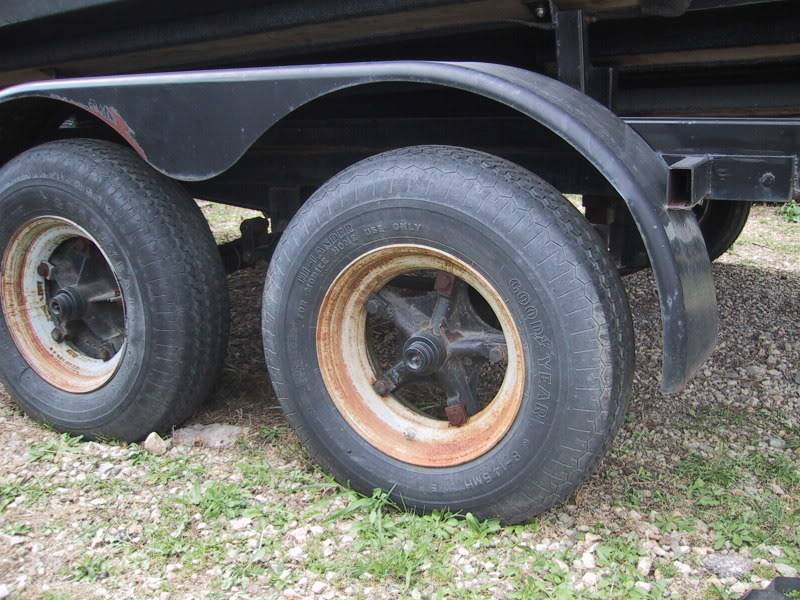 The optimal weight distribution is 60% for the front and 40% for the rear.
The optimal weight distribution is 60% for the front and 40% for the rear.
The trailer's operating manual or information plate indicates the permissible load. The tow ball usually accounts for 10% of the trailer's load capacity, that is, 30-90 kg. There are scales on the support wheels of some trailers, but in practice you have to check the load yourself. To do this, you need to try to raise the drawbar of the uncoupled loaded trailer with your hands and roughly estimate the load.
If a grown man is unable to raise the drawbar, the front of the trailer is overloaded. In this case, the load on the towbar ball and the rear axle of the car increases. A trailer overloaded at the front will tend to lift the front axle of the car, which can cause it to lose traction in an emergency.
If the center of gravity is shifted to the rear, the trailer raises the rear of the vehicle, which can lead to a skid. At the same time, the trailer rocks the car up and down and can even fall off the towbar ball.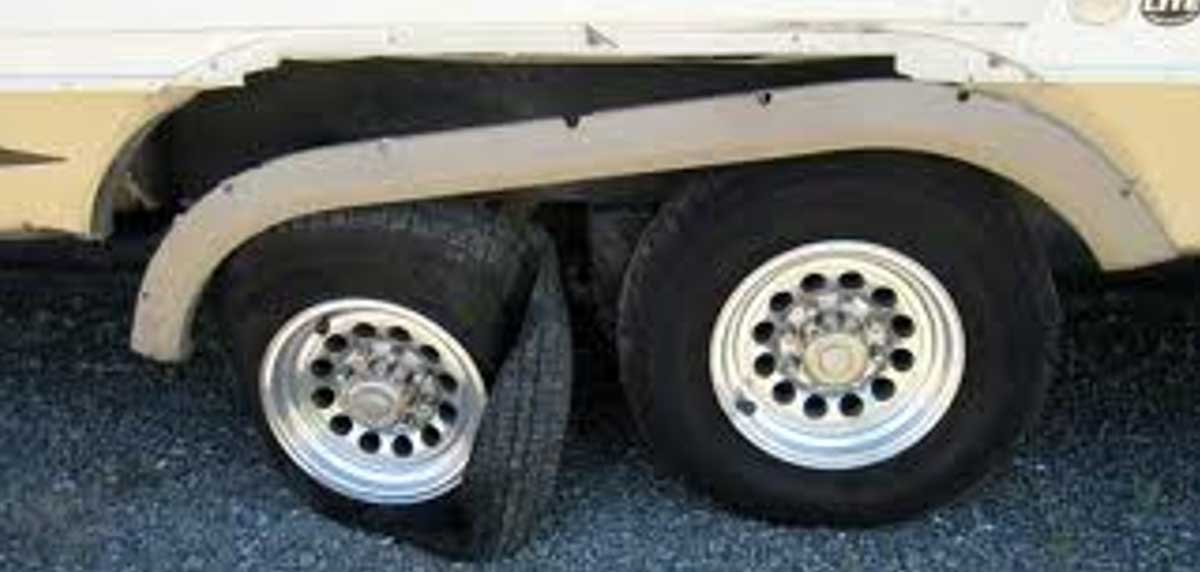
Handling. Vehicle with trailer becomes less manoeuvrable. The hardest thing to get used to is how the trailer behaves when driving backwards. Usually, the rear of the car, when the steering wheel is turned to the right, goes to the left, but with a trailer, the opposite is true. You need to turn the steering wheel in the direction where you want to direct the trailer. If you turn the steering wheel too far and continue driving, the trailer may fold and damage the rear bumper.
/guide/wheel-drive/
Which drive to choose: RWD, FWD, 4WD or AWD
When overtaking and changing lanes, a car with a trailer needs more space. You must always remember this so as not to "cut off" other vehicles. When turning with a trailer, you should not cut corners, but vice versa - take a turning radius larger than usual by about a meter. The trailer turns in a radius smaller than the wheels of the car. This is especially true at gas stations, when the driver drives close to the column.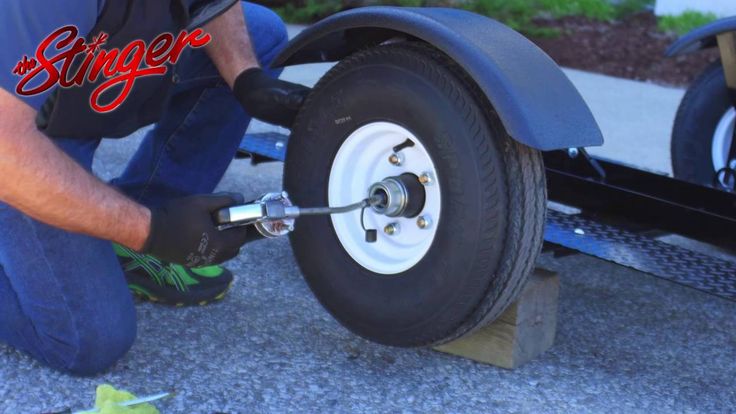
When accelerating, a trailer with a high tarpaulin or tailgate of an open trailer creates windage, so the vehicle accelerates more slowly. This is important to take into account when overtaking. A loaded trailer, when braking by inertia, pushes the car forward, so you have to brake more intensively and keep a distance twice as long as usual.
With a trailer, do not accelerate and brake abruptly. Movements should be as smooth as possible - as when towing another car. When turning, you do not need to brake, as this can fold the trailer or tip it over. You should slow down before turning, and after passing the middle, add a little gas. If the trailer sways, the driver will most likely want to slow down, but this is not worth doing: things can get worse and the trailer will collapse. Therefore, you need to accelerate to level the trailer. Of course, if traffic conditions permit.
/guide/buksir/
How to tow a car correctly
Parking with a trailer is also inconvenient.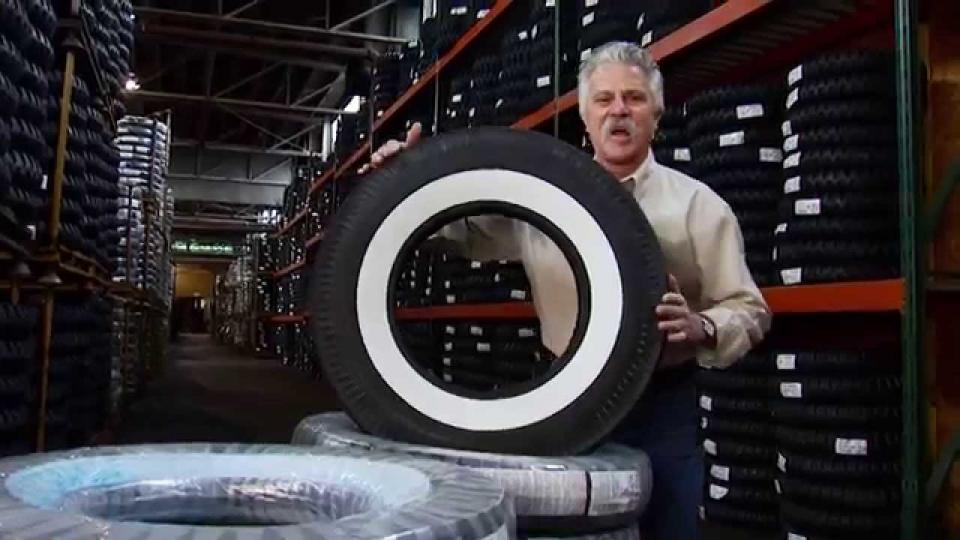 Ordinary parking pockets are not intended for trailers - you need to look for special places for long vehicles or leave a car with a trailer on the side of the road.
Ordinary parking pockets are not intended for trailers - you need to look for special places for long vehicles or leave a car with a trailer on the side of the road.
Spending. Fuel consumption when driving with a trailer depends on many factors: the shape of the trailer, the presence of a tarpaulin, wind speed and direction, driving style and terrain. Even the dimensions of the tractor matter. For example, if an SUV pulls a trailer that does not exceed its height, then the aerodynamic drag will be less.
Fuel consumption when driving with a trailer increases from 10 to 50%. For example, if the consumption on the highway without a trailer is 8 liters per 100 kilometers, then with it it will be 10 liters per 100 kilometers - 25% more.
/guide/fuel-economy/
How to save on gasoline
If a car with a trailer over 2 meters drives on toll roads, then the fare for it increases to the second class - “medium-sized transport”. The fare increases by about 40%.
The fare increases by about 40%.
The speed of a vehicle with a trailer outside built-up areas must be reduced by 20 km/h. On highways, the maximum speed is 90 km/h, on country roads — 70 km/h. In populated areas, the speed may be the same as without a trailer.
Marker lights on the trailer must be lit at night, in poor visibility and in the tunnel. If the trailer is hard to see on the road, it can lead to an accident. Penalty for non-working marker lights - 500 R.
Part 1 12.5 of the Code of Administrative Offenses of the Russian Federation
It is forbidden to carry people in the trailer. Even if it is not an ordinary trailer, but a caravan trailer. Passengers must wear seat belts while driving. For violation of this rule, a fine is provided - 1000 R.
For violation of this rule, a fine is provided - 1000 R.
Part 2 Art. 12.23 Administrative Code of the Russian Federation
Penalties for driving with a trailer without documents. If the trailer is not registered with the traffic police and 10 days have passed since its purchase, a fine from 500 to 800 RUR is provided. For a repeated violation, the fine increases to 5000 RUR or you can lose your rights for 1-3 months. If the trailer is registered, but the driver did not have any documents with him, then he will receive a warning or a fine of 500 R. The trailer can also be evacuated to a parking lot.
Art. 12.1, part 1 of Art. 12.3, part 1 of Art. 27.13 of the Code of Administrative Offenses of the Russian Federation
Sign "traveling with a trailer is prohibited." Those who have little experience in driving a car with a trailer are confused by the sign 3.7 SDA. In fact, it only applies to trucks and tractors - a car with a trailer passing under this sign does not violate anything.